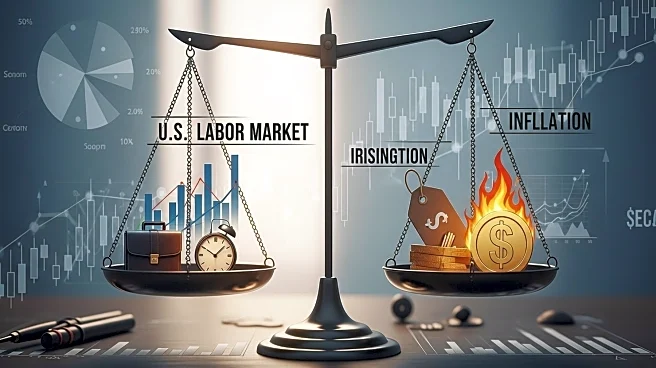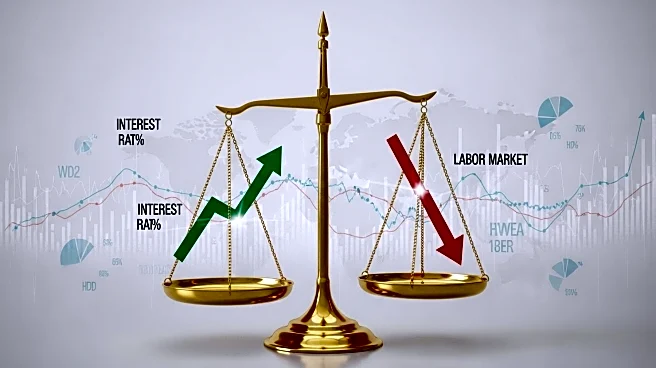What is the story about?
What's Happening?
Recent data indicates a softening U.S. labor market, with initial claims for state unemployment benefits rising to 263,000, the highest since October 2021. This increase has solidified expectations for the Federal Reserve to cut interest rates next week, with further cuts anticipated in October and December. Concurrently, the Consumer Price Index rose by 0.4% in August, driven by increases in housing and food costs. Despite inflation concerns, the labor market data has shifted focus towards potential rate cuts, influencing market dynamics. Major U.S. stock indexes have reached record highs, reflecting investor optimism about potential monetary easing.
Why It's Important?
The labor market's softness and rising inflation present a complex scenario for the Federal Reserve. Rate cuts are expected to support economic growth by reducing borrowing costs, potentially stimulating investment and consumer spending. However, persistent inflation poses challenges, as it may erode purchasing power and impact living standards. The anticipated rate cuts could bolster stock markets, benefiting investors, but may also lead to currency fluctuations. The Federal Reserve's decisions will be crucial in balancing inflation control with economic growth, impacting various sectors and stakeholders.
What's Next?
The Federal Reserve's upcoming meeting is expected to result in a 25-basis-point rate cut, with further cuts likely in the following months. Investors will closely monitor inflation and labor market trends to gauge future monetary policy. The impact of rate cuts on the economy, particularly in terms of consumer spending and investment, will be pivotal. Market reactions, including stock performance and currency movements, will provide insights into the broader economic outlook.
AI Generated Content
Do you find this article useful?














